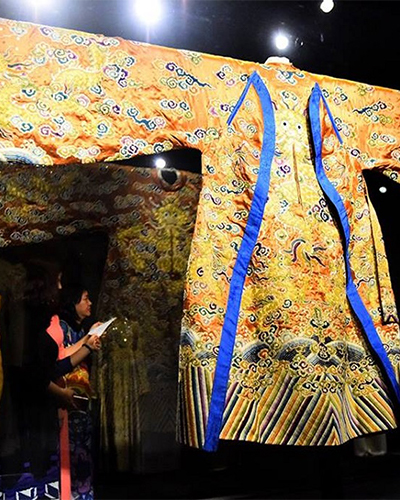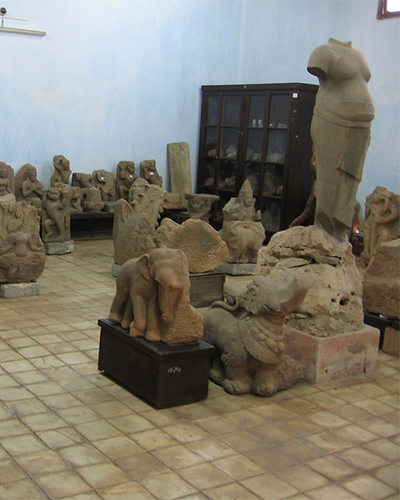Da Nang Museum of Cham Sculpture
General introduction
Located in the heart of Da Nang city, the Da Nang Museum of Cham Sculpture is an indispensable stop for
visitors on the journey to discover the heritage and cultural treasures in the Central and Central Highlands
of Vietnam.
.jpg)
.jpg)
The museum currently houses and displays the richest and most representative collection of religious
sculptures of the ancient kingdom of Champa which has existed and flourished for decades with many heritages
still remaining preserved, including the system of magnificent temples and other tangible and intangible
cultural heritages.
History
The procedure of collecting Champa sculptures has begun in the late 19th century. Numerous exhibits were
found in the region of Da Nang, Quang Nam and neighboring provinces then gathered at the museum with the
name at that time “The Garden of Tourane”.
.jpg)
The collection marks the merits of passionate French archaeologists, especially those who worked for the
French School of the Far East (L’École Française d’Extrême – Orient, abbreviated as EFEO). Some sculptures
have been moved to France, others have been preserved at museums in Hanoi and Saigon (now known as Ho Chi
Minh City) but most of the characteristic artefacts are still stored at The Garden of Tourane ( Tourane is
the name of Da Nang at that time).
The idea of building the Museum to preserve Champa sculptures had been sparkled since 1902. In particular,
it must highlight the EFEO project with the great contribution of Henri Parmentier, Dean of the Department
of Archeology. After significant effort and determinations, the first building was started constructing in
1915, completed in 1916 and opened to the public in 1919.
.jpg)
The original design of the building was initiated by two French architects, Delaval and Auclair, based on
Henri Parmentier’s proposal of using the features of the Champa temples. Despite later expansions, the
original architectural features have remained intact to this day after over 100 years.
In the 1930s, the Museum was first expanded. The nearly-1000-meter-square building was arranged into the
basic galleries shaping the itinerary within the museum till today, namely: Tra Kieu, My Son, Dong Duong,
Thap Mam Hall and the corridors of Quang Nam, Quang Ngai, Binh Dinh and Kon Tum.
.jpg)
In 2016, the city restored all buildings, adjusted and upgraded the galleries. The refurbishment project
aims to connect all buildings of the museum into a sightseeing tour. Especially, the main exhibition
showcases Champa sculpture collections, the rest are specialized rooms on Inscription, Pottery, Music,
Festivals and Traditional vocations of Cham people in Ninh Thuan nowadays. Performance space and educational
activities are positioned on the second floor and the renovated service area is in the garden.
In 2011, Da Nang Museum of Cham Sculpture was listed as the first-class museum in Vietnam. Thereby, that
approves the role and contributions of the Museum in the conservation and promotion of the values of Champa
cultural heritage in particular and Vietnam in general.
.jpg)
Showroom No. 5: Exhibits and introduces cultures of ethnic groups of the Austronesian language family (Chăm,
Gia Rai, Ê Đê, Raglai, Chu Ru) and Han language (Hoa, Ngái, Sán Dìu). Ethnic groups of the Austronesian
language family inhabit mainly on the red-soil Central Highlands and coastal stretches of land in Central
VietNam; the Austronesian culture has the matriarchal characteristics. Ethnic groups of Han language family
inhabit in the North, Central and South VietNam; Han culture has the patriarchy characteristics.
With more than 4,500 original documents, artifacts, films, pictures and 735 supplementing scientific
documents, the museum exhibition system was built in an advanced and modern way. Electronic information
technology equipment and audio softwares help revive the settlement landscapes and cultural life of 54
ethnic groups, attracting the visitors.
.jpg)
.jpg)
.jpg)
.jpg)
.jpg)
.jpg)







